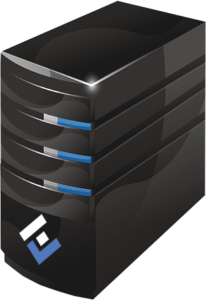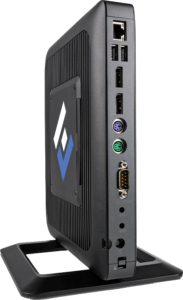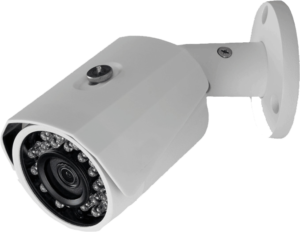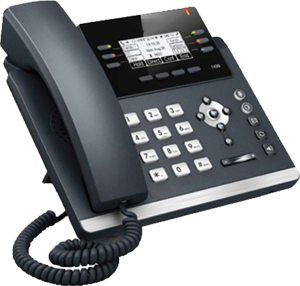Enterprise Optimization Based on One Local Server and Many Thin Clients
Introduction
In today’s fast-paced business environment, optimization is key to success. Enterprise optimization, in particular, plays a crucial role in maximizing productivity and efficiency. One simple and effective strategy for achieving enterprise optimization is based on utilizing one local server and many thin clients.
The strategy described in this article is perfect for many industries such as collision repair shops, granite production, HVAC, etc – after implementing it many companies have dramatically increased productivity, reliability, ease of use and most importantly, reduced operating costs.
It is important to note that this strategy implementation does not require any significant changes to the production process or special training of employees – they will not encounter anything fundamentally new in their daily work.
This setup provides several advantages including centralized management, improved security, and reduced hardware costs. The server handles all the processing tasks and data storage, while the thin clients act as terminal devices that display the output, as well as handle user input. This setup minimizes downtime, simplifies upgrades, and reduces maintenance costs. With this architecture, businesses can maximize resources, improve productivity, and enhance operational efficiency.
In this article we will look at what components this system consists of, approximately how much they cost and how to easily deploy it in your enterprise, even without having any special skills.

The Power of One Local Server
What is a Local Server?
A local server is a central computing system responsible for managing and storing data within a specific location, such as an office or facility. It acts as the backbone of an enterprise and provides essential services to connected devices.
Increased Reliability and Security
By implementing a single local server, enterprises can enjoy enhanced reliability and security. With data stored in a centralized location, backup and recovery processes become more efficient. In the event of a hardware failure, businesses can quickly restore operations without significant downtime. Furthermore, increased security measures can be implemented on a single server, ensuring the protection of sensitive information.
Streamlined Maintenance and Management
Having a single local server simplifies maintenance and management tasks, as IT personnel only need to focus on one central system. Updates, patches, and upgrades can be performed more efficiently, reducing the overall workload on the IT department – in many cases it is enough to have only one such specialist on staff. This streamlined approach frees up valuable time and resources that can be allocated to other critical areas of the enterprise. Administrator can manage and monitor data access, backup, and security protocols from a single location. This centralized approach ensures consistency and compliance with regulatory requirements.

The Versatility of Thin Clients
What are Thin Clients?
Thin clients are lightweight computing devices that rely on a centralized server to perform most of their processing tasks. They have limited local processing capabilities, making them highly dependent on the local server for computational needs.
Cost-Effective Solution
Utilizing thin clients can result in significant cost savings for enterprises. These devices are affordable, as they don’t require powerful hardware components. Instead, they leverage the processing power of the local server, reducing the need for expensive individual workstations. This cost-effectiveness allows businesses to allocate their budgets to other essential areas of operations.
Enhanced Security and Data Integrity
Thin clients contribute to a higher level of security and data integrity within the enterprise. Since most data processing occurs on the local server, sensitive information is not exposed or stored locally on individual devices. This centralized approach minimizes the risk of data breaches and unauthorized access, ensuring the confidentiality of corporate data.
Simplified Deployment and Maintenance
Deploying and maintaining thin clients is a straightforward process. With fewer components and configurations to manage compared to traditional PCs, even non-IT specialist can efficiently handle large-scale deployments. Updates, security patches, and software upgrades can be implemented by administrator seamlessly on the central server, eliminating the need to update each individual device manually.

Modern effective approach to workplace organization
Surveillance IP cameras
IP cameras are essential for enterprises in several ways. Firstly, it helps improve the safety and security of employees, customers, and property by deterring potential criminal activities and identifying perpetrators. Secondly, it provides real-time monitoring, allowing managers to oversee operations and ensure compliance with policies and regulations. Thirdly, it can serve as a valuable tool for collecting evidence in case of incidents or accidents. Lastly, surveillance cameras can aid in improving worker productivity and efficiency by monitoring work processes and providing insights for process improvement, which leads to better business outcomes.

SIP desktop phones
SIP phones provide several advantages to enterprises:
- they offer better call quality and reliability than traditional phones;
- they allow for easy integration with other communication systems like video conferencing and messaging;
- they offer advanced features like call forwarding, call transfer, and voicemail;
- they enable remote workers to stay connected with the office and customers;
- they help reduce operational costs by eliminating the need for separate lines for voice and data and by providing low-cost international calling.
SIP desktop phones are typically much cheaper than traditional telephony for enterprises. This is because SIP is a technology that allows for voice and multimedia communication over the Internet, offering reduced costs compared to traditional telephony services that rely on copper wires and expensive hardware.
With SIP (Session Initiation Protocol) enterprises can consolidate their voice and data communications onto a single network, reducing infrastructure and management costs. SIP desktop phones are also typically more flexible and scalable, allowing for easier management and customization of communication features. Today it’s difficult to find at least one serious business that wouldn’t use SIP.
VoIP is a technology associated with SIP, that enables voice calls over the internet. VoIP telephony is an efficient and cost-effective way for enterprises to communicate and collaborate with their employees and customers.

Achieving Enterprise Optimization
Seamless Collaboration and Scalability
The synergy between one local server and many thin clients enables seamless collaboration among employees. With shared resources, employees can work cohesively on projects, accessing data and applications from any thin client device. The scalable nature of this approach allows for easy expansion as the enterprise grows, ensuring optimal productivity and efficiency.
Flexibility and Mobility
Thin clients enable greater flexibility and mobility within an enterprise. Employees can access their desktops and resources from anywhere, as long as they have a thin client device and an internet connection. This freedom empowers remote workers, enhances productivity, and supports modern work styles.
Stable, reliable and safe network
A critical component for the enterprise network is a gateway or firewall. It connects the corporate network to the internet and acts as a bridge to filter incoming and outgoing traffic, providing protection against cyber attacks and unauthorized access. A secure enterprise gateway should include several features, such as VPN, IDS/IPS, anti-virus, anti-spam, content filtering, and bandwidth management. Moreover it provides high reliability, scalability, and ease of management, enabling IT administrators to monitor and control network traffic effectively. Overall, the right gateway solution can help organizations to enhance their network security, optimize their performance, and reduce costs.
Other network equipment required to deploy the described architecture includes mesh access points and PoE smart switches.
Mesh access points allow to ensure seamless and reliable Wi-Fi connectivity throughout their premises. Mesh access points improve network coverage and extend network range, eliminating dead spots and ensuring that all devices can connect to the network. They also provide better network performance by automatically routing traffic to the strongest signal, reducing network congestion, balancing network loading and preventing dropped connections. Additionally, mesh access points can be easily expanded and configured to accommodate the growing number of devices and users in an enterprise network.
Enterprise networks also require a PoE (Power over Ethernet) smart switch to simplify the infrastructure, reduce the need for power outlets, and increase flexibility and manageability. With PoE, the switch can supply power to connected devices such as VoIP phones, wireless access points, and IP cameras, eliminating the need for separate power cables and outlets. The smart switch provides advanced management and monitoring capabilities, optimizing the network’s performance, and minimizing downtime. Also, it allows for remote management, enabling administrators to configure and monitor the switch from anywhere, providing a secure and reliable network for enterprise operations.

How much does it cost?
The total cost of all necessary equipment, installation and configuration work depends on various factors including the enterprise size, the number of employees and special customer requirements.
To make things easier for owners and managers, we have provided a table* below with estimated prices for each item to give you a rough idea.

How to implement easily?
Of course, many business owners and managers may not be so well versed in these terms, hardware and software. We at EstVis perfectly understand the main business goals, such as optimizing production processes, reducing costs and increasing profits, so we have studied the various nuances of different industries, including collision repair, granite production, HVAC and many others, in order to offer the most suitable, economical and a seamless way to deploy the described architecture across the enterprise.
In addition to inspection, full consultation and architecture deployment at the enterprise, we include clear instructions on setting up and configuring the architecture, as well as providing troubleshooting steps and best practices. Additionally, offering training and support to the enterprise’s staff and administrators can ensure they have the necessary skills and knowledge to use the architecture successfully, taking your business to a whole new level. Regular communication and support available can also help address any challenges and ensure a smooth deployment process.
It is impossible to determine a universal value for the cost of deploying an architecture and a complete list of its components, since it depends on many factors – please feel free to contact us by phone +1 407 652 33 01 or email: info@estvis.com.
Our specialists are ready to answer your questions and will be happy to advise and help you decide on the most optimal and cost-effective system configuration.
Even more optimization with EstVis
Optimizing the hardware architecture is only a part of the potential to increase the efficiency of production processes, reduce costs and increase profits.
Another part that gives a tangible effect is the introduction of modern software that takes into account the peculiarities of business processes in various industries, such as collision repair, granite production, HVAC, etc.
EstVis is an electronic workflow that streamlines various business processes, including work orders management, estimate, parts and invoices processing, payroll generating, customer service and many other features. The software streamlines the process of generating and signing Work authorization forms making it absolutely paperless, saving time and significantly reducing manual filling. EstVis simplifies the process of photo documentation allowing users to choose preliminary photos or use default templates.
And of course EstVis includes well-designed integration with VoIP telephony, IP cameras and the overall ‘one server – many clients’ architecture described in this article.
Here you can learn more about EstVis features helping to increase profits and reduce costs using collision repair business as an example.
Conclusion
Enterprise optimization is vital for businesses striving to stay ahead in a competitive landscape. By implementing one local server and many thin clients, enterprises can reap the benefits of increased reliability, enhanced security, streamlined maintenance, and cost-effective operations. The seamless collaboration, flexibility, and centralized data management achieved through this approach further contribute to overall optimization.
Embrace the power of one local server and many thin clients to experience significant improvements in productivity, efficiency, and the overall success of your enterprise, no matter what is your industry – collision repair, granite production, HVAC or some other.
Architecture optimization combined with the use of software such as EstVis gives your business a huge advantage over competitors, which you will notice with pleasant surprise in the first months of implementation, along with cost reduction and increased profits.
* The information provided in this article does not constitute an offer.